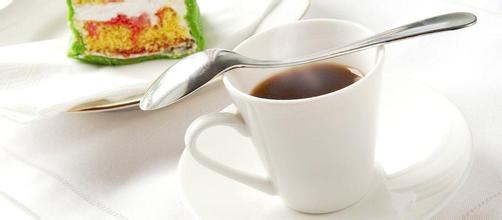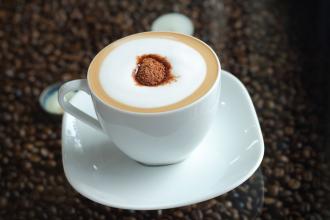Jasmine-scented Yega Chefevoca Coffee Flavor Manor
Washing Ethiopia can reach the highest level of G1, which is very rare.
The bean comes from a single farm, Ethiopia, and is processed by the Waka Cooperative (Worka cooperative). Alemayehu Alako Farm is a member of the Waka Cooperative.
Woka Cooperative, located in the south of Gedeb District, was founded in 2005, and joined the famous Yejia Coffee Farmers Cooperative Union (YCFCU,Yirgacheffe Coffee Farmers Cooperative Union) that year, which is famous for producing high quality sun Ye Jia Coffee Farmer. The Waka Cooperative has about 300 coffee farmers. YCFCU was founded in 2002 and includes 26 other cooperatives serving more than 45000 coffee farmers.
Is it true that there is no G1 for washing Yega snow coffee? The very rare G1 beans have to be tasted.
Compared with the traditional sun-treated Harald area, sun exposure is not common. As the first water washing plant in Ethiopia, coffee drinkers are more familiar with Yejia, which is famous for its elegant lemon and orange style.
The coffee flavor treated with water is not easy to have wild flavor and has the characteristics of purity and freshness, which is suitable for light baking; this washing Ethiopia can reach the highest grade of G1, which is already a grade with few defects.
Flavor: distinctive floral, dry and wet fragrance all have strong citrus flavor, lemon, kumquat, white grape juice, etc., colorful flavor, rich sweet and sour citrus in the middle and rear, rich sweetness like soda, distinct personality, outstanding, it is very rare to see that most coffee beans are washed, but there are also a small number of absolute crystal beans deliberately use the sun method to enhance the charming fruit flavor and mellow thickness. These mountain villages are foggy, like spring all year round, with a gentle breeze in summer, cool but not hot, rain but not damp, and no cold damage in winter, giving birth to a unique "regional flavor" of citrus and flower fragrance. Caffeine F trees are mostly planted in farmers' own backyards or mixed with other crops in farmland, and the yield per household is not much, which is a typical pastoral coffee. Almost all of the award-winning beans come from the above-mentioned coffee villages and communities.
The so-called "Yega Chuefei" refers to strong aromas of jasmine, lemon or green citric acid, as well as sweet peaches, almonds and tea. The author's tasting experience has only one sentence: "Coffee entrance, flowers in full bloom!" Except for the comfort of the taste buds and olfactory cells in the nasal cavity touched by flowers. In addition to the fragrance of flowers, the delicate mellow thickness is like silk and feels wonderful to the touch. At present, many coffee chemists have begun to study the microclimate and soil and water around Yejashafi, in order to sum up the planting equation of boutique coffee. Strictly speaking, Yegashafi is a by-product area of Sidamo. Located in the northwest of Sidamo, with mountains and lakes, the town is one of the highest coffee-producing areas in Egypt. However, the mode of production and flavor here are so outstanding that Egyptian coffee farmers compete to be proud of the flavor of their coffee, so they are independent from Sidamo and become the most famous producing area in Africa.
At first, Yejasuefei's coffee trees were planted by European monks (somewhat similar to Belgian monks who advocated planting wheat and brewing beer), and later by farmers or cooperatives. Yejia Xuefei is actually constructed by surrounding coffee communities or cooperatives, including Edido, Hafusa, Hama and Bdon near the Fog Valley. Although most of the sun-treated beans are more layered, they are far less clean than water-washed beans. However, the surprising part of this sunlit Yeruifei Ariga G1 is that it tastes as clean as any washed coffee, and in such a clean taste, it is also able to retain the richer layering of its sun-dried beans. I believe this is why Maoye has ever had the best sun-dried Yerujia. Very fascinating.
Because this bean is harvested by a small cooperative, it is extremely difficult to find information on the Internet, but Maoye accidentally found the information sent by this bean to the Coffee Review Cup, and the cup test score was as high as 95 points. I remember that when I got the Blue Nile, the cup test score was 94 points in Coffee Review. It seems that for the sake of many Yega fans, Maoye has to start hoarding some Ariga G1 raw beans.
[boutique Coffee] the taste of Ariga Aricha G1 first love in Ethiopia Yega Xuefei sun
When roasting this bean, Maoye still continues the usual style of Maomao, which is shallow and baked until the end of an explosion. Frankly speaking, Maoye prefers to stay at this baking degree with high density and stronger acidity, but in order to ensure sweetness and tail rhyme, a little acidity has to be sacrificed, and the baking degree at the end of an explosion will make the flavor of the whole coffee bean more complete and more beautiful.
[boutique Coffee] the taste of Ariga Aricha G1 first love in Ethiopia Yega Xuefei sun

Important Notice :
前街咖啡 FrontStreet Coffee has moved to new addredd:
FrontStreet Coffee Address: 315,Donghua East Road,GuangZhou
Tel:020 38364473
- Prev

Introduction to the characteristics of Flavor and Taste of High-quality Coffee in the producing area of Yegashefi Adoudo Coffee Manor in Ethiopia
Yega Xuefei is divided into two categories according to the different ways of handling raw coffee beans: category An is washed, and the grade standard is set by the American Fine Coffee Association SCAA, which is divided into Gr-1 and Gr-2. The smaller the Arabic numeral is, the higher the grade is. The style of G1 Yega Chuefei is distinct, and the flavor of citrus and floral flavor in the coffee liquid is irresistible to everyone. Category B is the taste of sun-treated raw coffee beans.
- Next

Dominica Santo Domingo Coffee with a faint fragrance; an introduction to the characteristics of the manor area
In 1700, the Bourbon dynasty replaced the Habsburg dynasty in Spain. The new dynasty introduced some economic reforms. Trade in Santo Domingo began to flourish. [3] French rule (1795-1809) in 1795, France and Spain signed the Basel Peace Treaty in Switzerland, agreeing to cede the Santo Domingo area in the eastern island of Dominica to France.
Related
- Detailed explanation of Jadeite planting Land in Panamanian Jadeite Manor introduction to the grading system of Jadeite competitive bidding, Red bid, Green bid and Rose Summer
- Story of Coffee planting in Brenka region of Costa Rica Stonehenge Manor anaerobic heavy honey treatment of flavor mouth
- What's on the barrel of Blue Mountain Coffee beans?
- Can American coffee also pull flowers? How to use hot American style to pull out a good-looking pattern?
- Can you make a cold extract with coffee beans? What is the right proportion for cold-extracted coffee formula?
- Indonesian PWN Gold Mandrine Coffee Origin Features Flavor How to Chong? Mandolin coffee is American.
- A brief introduction to the flavor characteristics of Brazilian yellow bourbon coffee beans
- What is the effect of different water quality on the flavor of cold-extracted coffee? What kind of water is best for brewing coffee?
- Why do you think of Rose Summer whenever you mention Panamanian coffee?
- Introduction to the characteristics of authentic blue mountain coffee bean producing areas? What is the CIB Coffee Authority in Jamaica?

